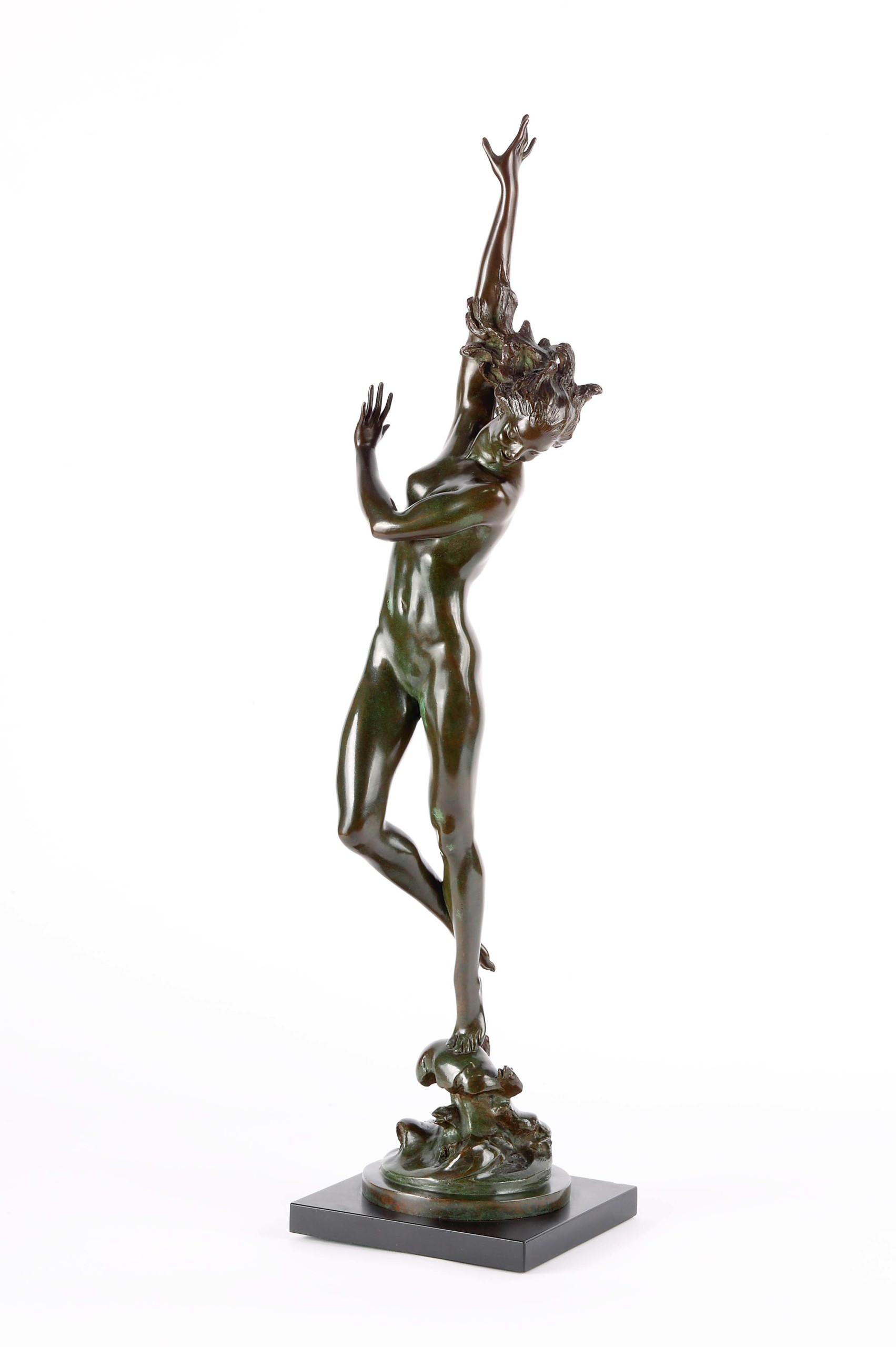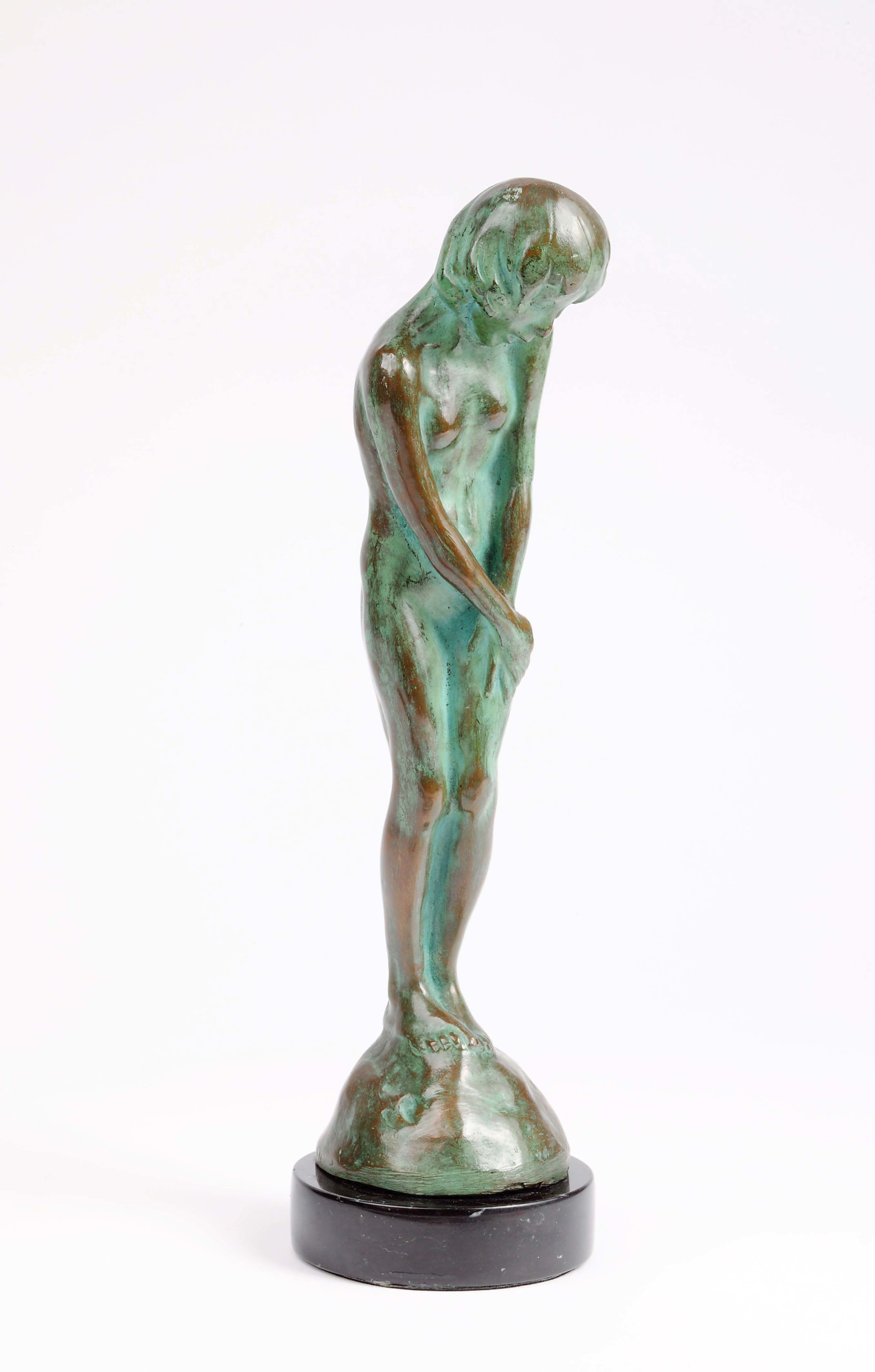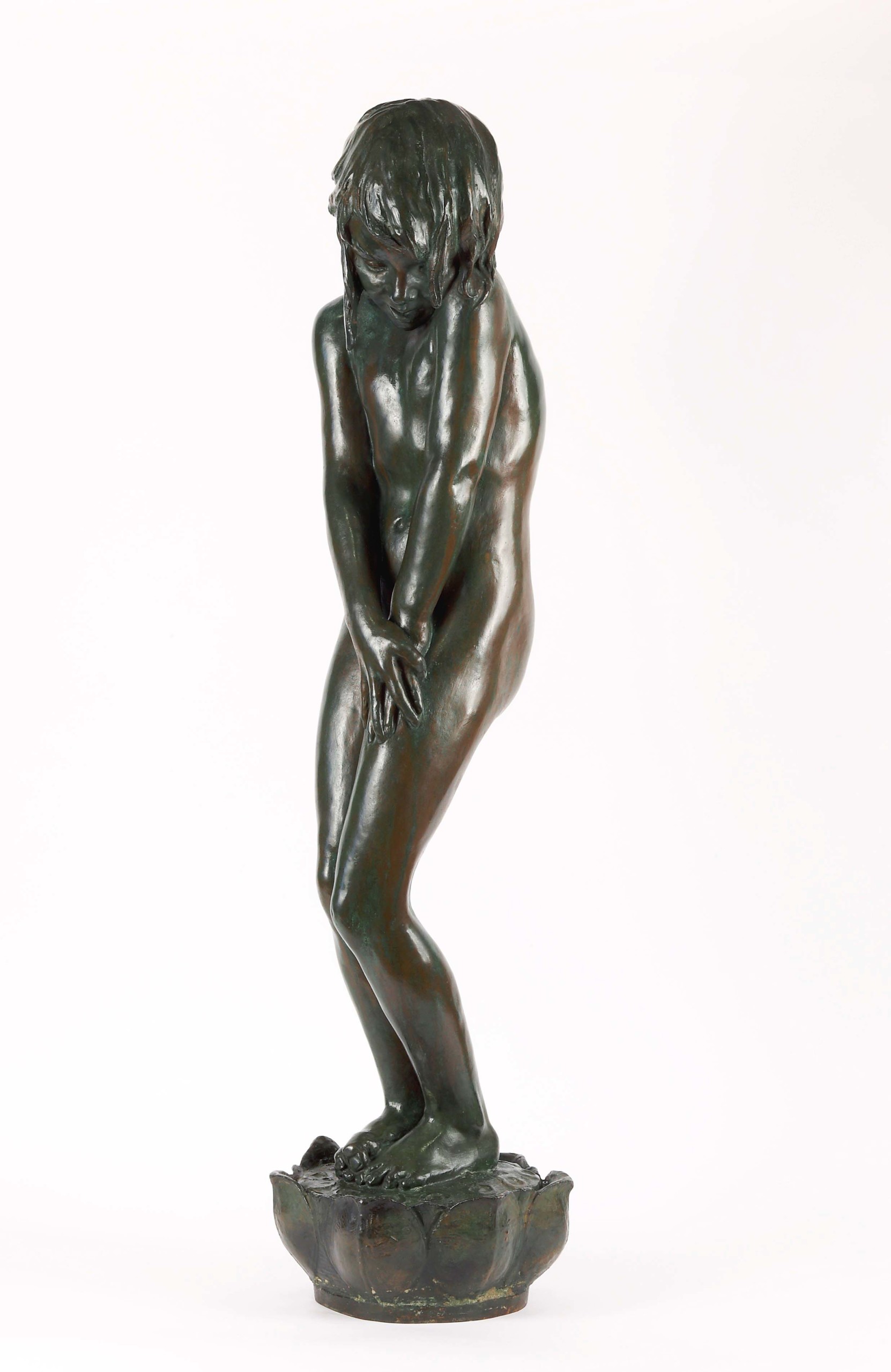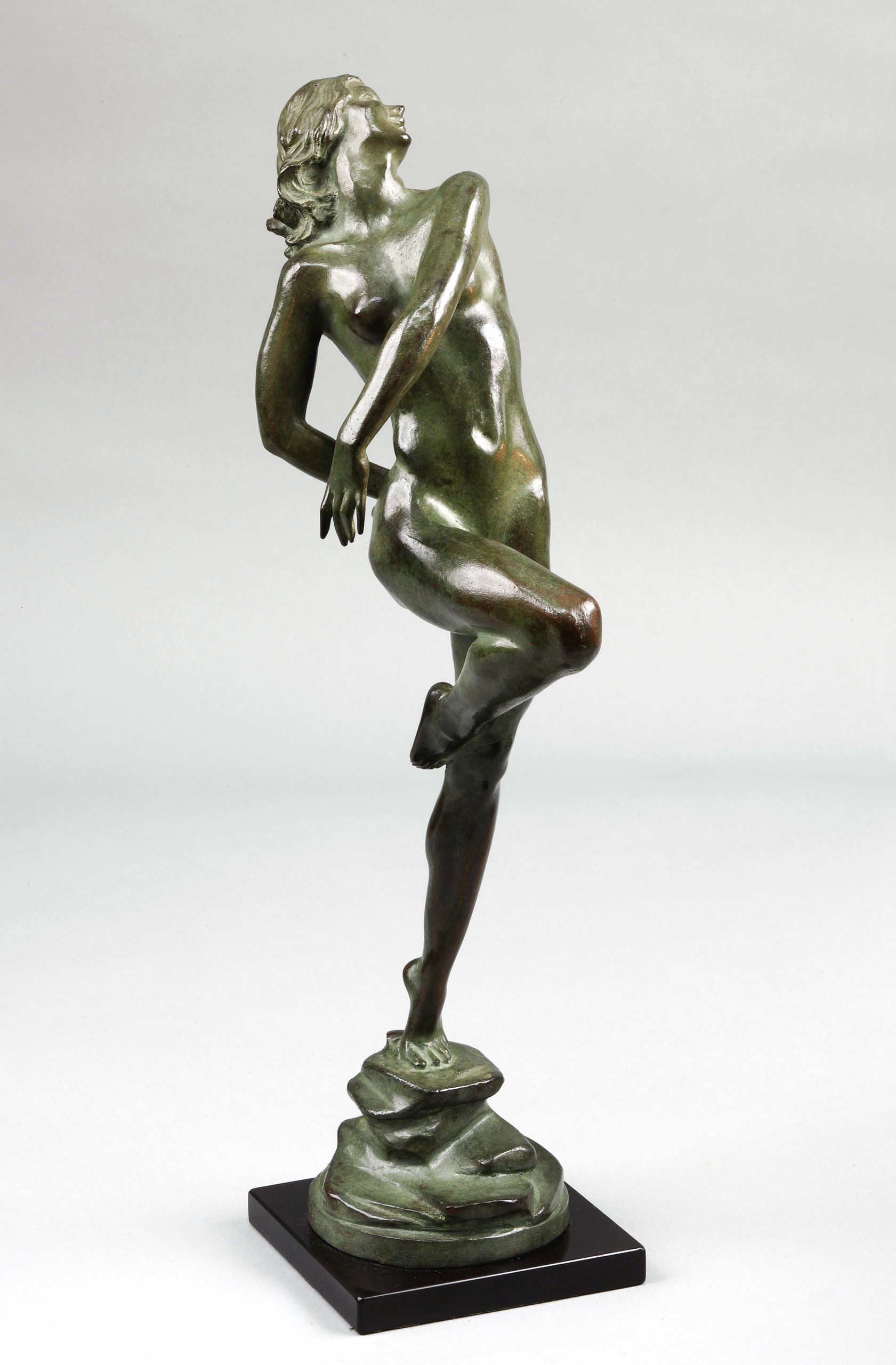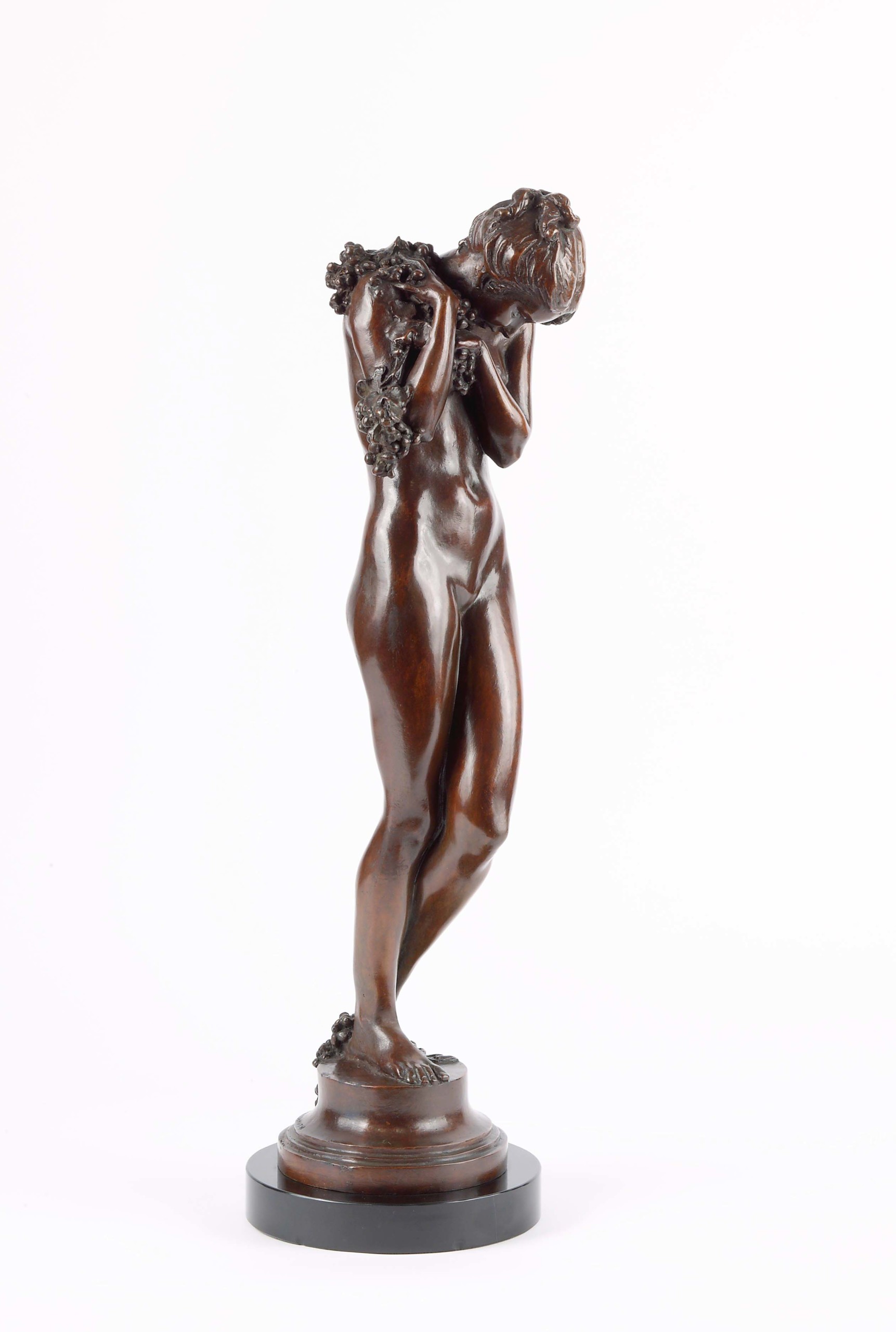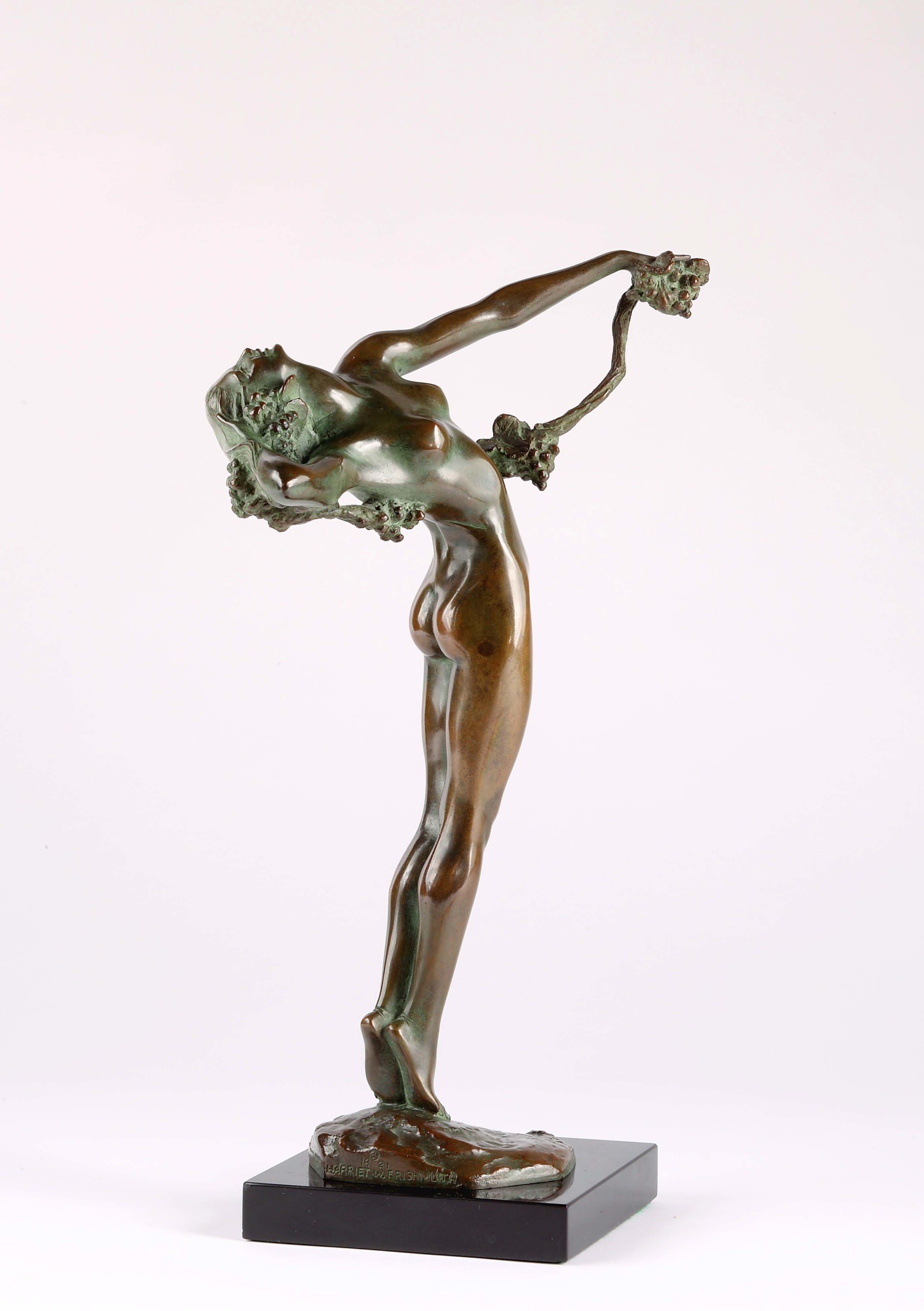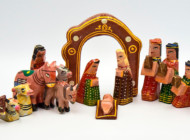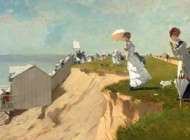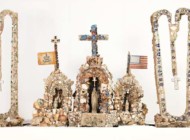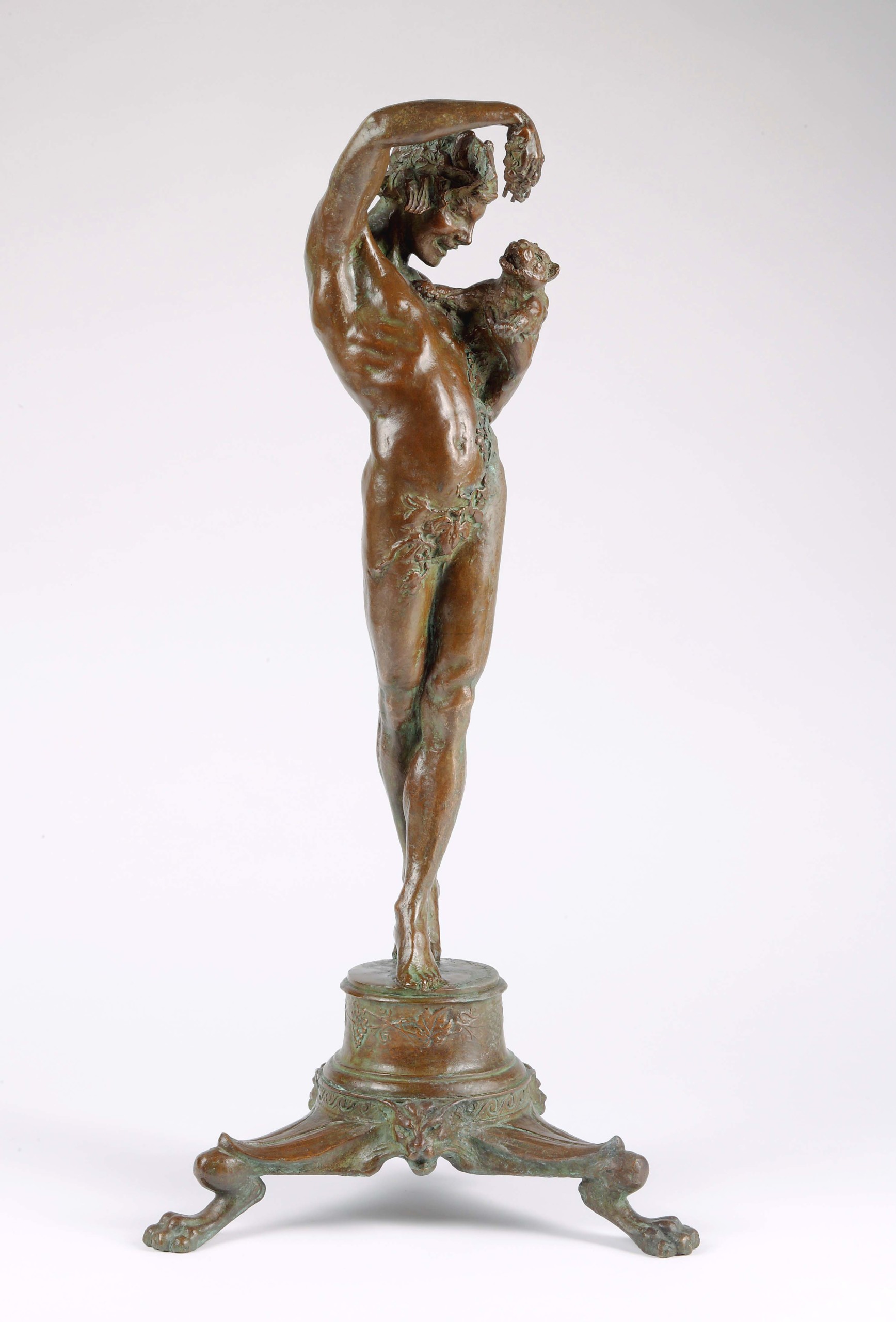
“Boy and Panther Cub: Fountain” by Malvina Hoffman, around 1915, bronze with overall brown patina and green highlights in hair. Gift of Dr Michael L. Nieland.
By Jessica Skwire Routhier
GREENSBURG, PENN. — This year, 2025, is the “Year of Woman Artists” at the Westmoreland Museum of American Art. Blockbusters are planned (and some have already opened) on Cecilia Beaux, Berenice Abbott and Elizabeth Catlett, as well as contemporary artists Brynn Hurlstone and Aaronel deRoy Gruber. Augmenting this lineup is the museum’s longstanding commitment to showing the work of women artists who are perhaps not the household names that Catlett and Abbott are (one example is the major show “Simple Pleasures: The Art of Doris Lee,” which I covered for Antiques and The Arts Weekly in 2021). The three sculptors in “A Fountain of Forms” fall more into the latter category, although, like Lee and so many other under-remembered women artists, they were far from unknown or unsuccessful for their time. Their exploration of womanhood, as both their own condition and a primary subject for their art, is the focus of “A Fountain of Forms,” on view through March 29.
The exhibition may at first seem to be a modest one — just 12 bronze sculptures, five of them tabletop size — but to realize that all the works on view are from the Westmoreland’s permanent collection is to understand what a grand statement they have made to collect seriously within this very specific and often ignored moment in American art. Most of the works are from a larger 2015 gift from Dr Michael Nieland that included about 50 early Twentieth Century works of sculpture. The exhibition was organized in part to recognize that gift, and the specific selection of works by Malvina Hoffman (1885-1966), Harriet Whitney Frishmuth (1880-1980) and Janet Scudder (1896-1940) was made to align with the museum’s broader “Year of the Woman” programming.

“Pushing Men: Bookends” by Harriet Whitney Frishmuth, 1912, bronze with dark brown patina. Gift of Dr Michael L. Nieland.
“A Fountain of Forms” was initially the conception of former chief curator Jeremiah William McCarthy (now at the Rutgers Museum of Art), whose curatorial practice has focused on women artists. This means that, quite laudably, two men — McCarthy and Neiland — deserve credit for building and stewarding this collection thus far. But in taking over the project upon McCarthy’s departure, the Westmoreland’s director, Silvia Filippini-Fantoni, and education director, Erica Nuckles, have been able to bring in their own experiences and perspectives as women in the arts. For an exhibition that is about women looking at, thinking about and representing other women, this is an essential viewpoint.
During a recent conversation, Nuckles mused, “It makes me think about the famous goddess sculpture that only male anthropologists had looked at before and thought, ‘oh it’s a fertility thing.’ And finally, women started becoming anthropologists and they’re like, ‘I think it’s actually a self-portrait somebody made of themselves, looking at their own body and not having a mirror.”
Thankfully, we know more about this cohort of Twentieth Century sculptors than we do about the maker of the “Venus of Willendorf,” and we also know more about the sculptural traditions that preceded them. While none of the works on view are self-portraits, it is not mere speculation to say that they are in part reflections of the artists’ own selves, in a way that was entirely new for the sculpted female nude, in the United States and beyond.
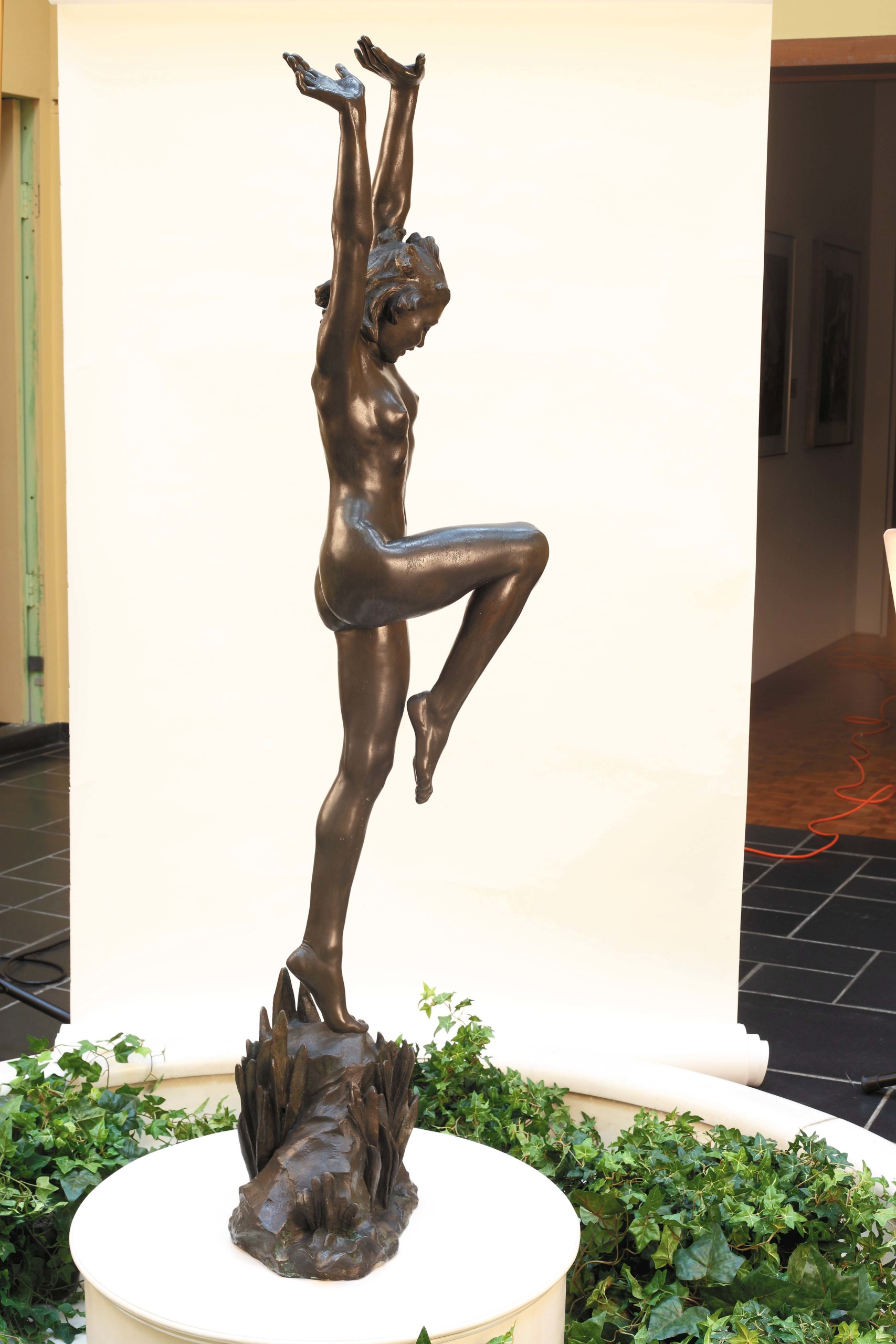
“Joy of the Waters” by Harriet Whitney Frishmuth, 1917, bronze. Gift by exchange.
Hoffman and Frishmuth had similar upbringings and paths to their sculptural practice. Born within five years of one another, in New York and Philadelphia, respectively, they grew up affluent, with families that made sure they had unfettered access to the arts. Their cities of birth offered opportunities for education in the arts that — as Nuckles observes — would not have been available to women a generation or two before. In New York, Hoffman studied at the Art Students League and took private lessons with John White Alexander and other stars of the day; in Philadelphia, the Pennsylvania Academy of Fine Arts had admitted women since 1844 (though Frishmuth also studied at the Art Students League). Both artists also took hands-on anatomy classes and spent extended periods studying in Paris with the famed French sculptor Auguste Rodin. Their families’ wealth enabled these opportunities for education and travel and also probably freed both Hoffman and Frishmuth from the necessity of making a living as an artist. Nevertheless, they were ambitious: seeking commissions, exhibiting publicly and winning awards at the National Academy of Design and the Paris Salon, among other venues.
Both artists were also deeply engaged with dance, which Nuckles notes was undergoing its own revolution at the time. One of Hoffman’s first sculptures to garner widespread recognition was “Bacchanale Russe,” which the exhibition label says was “inspired by an erotic pas de deux from a ballet” that the artist saw in London. Certainly, ballet was dominated by Russian dancers at the time, including Vaslav Nijinsky and Anna Pavlova — rumor has it that Hoffman and Pavlova were an item at one point — but there was also the Ballets Russes, the experimental company founded by Sergei Diaghilev. Hoffman’s pair of leaping dancers huddled under a cloth seems to align with Diaghilev’s modernism as much as Rodin’s.
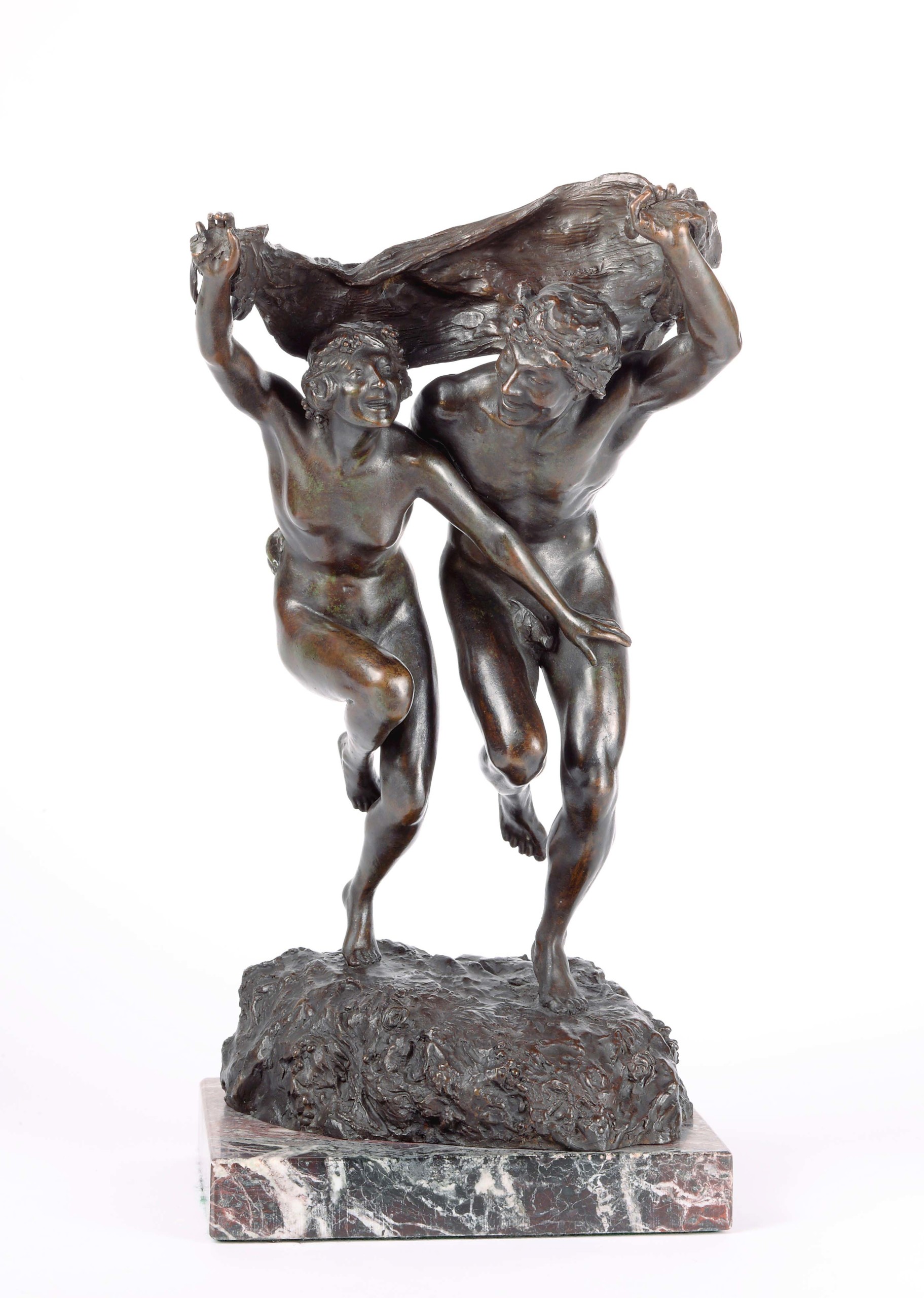
“Bacchanale Russe” by Malvina Hoffman, 1912, bronze with dark brown patina. Gift of Dr Michael L. Nieland.
Nuckles sees a thread of revolution throughout the works on view: the flowering of modernism in dance and the arts; the expansion of women’s rights around the years of suffrage, including increased access to education; and the technological revolutions that made possible the kinds of expression in bronze that Rodin was promoting and teaching to his students. The exaggerated poses of Frishmuth’s “Joy of the Waters,” “The Vine” and “Laughing Waters,” for instance, benefited from advances in the lost-wax bronze casting technique that had also allowed Edgar Degas to create his famous maquettes of dancers. In particular, the slender elements and open spaces of “The Vine” — for which the Slovenian dancer Desha Delteil served as the model — would have presented significant technical challenges of the kind Frishmuth is known to have tacked directly, working closely with the foundries that brought her work to its final form.
Scudder’s story is somewhat different, and her rise is therefore in some ways more impressive. A decade older than Hoffman and Frishmuth, and born into a working-class family in Terre Haute, Ind., rather than one of the cultural capitals of the East Coast, Scudder nevertheless also benefited from the opening up of arts education to women. She studied at the Cincinnati Art Academy, which was founded by women, and then spent several years making a living as best she could, carving furniture and casting medals. Her big break came in 1892, when preparations for the World’s Columbian Exhibition in Chicago put Midwest architects, designers, artists and sculptors in high demand. Her work as an assistant there ultimately led to high-profile commissions and to her own sojourn in Paris studying and working with Frederick W. MacMonnies. Her “Young Diana” earned an honorable mention at the Paris Salon in 1911.
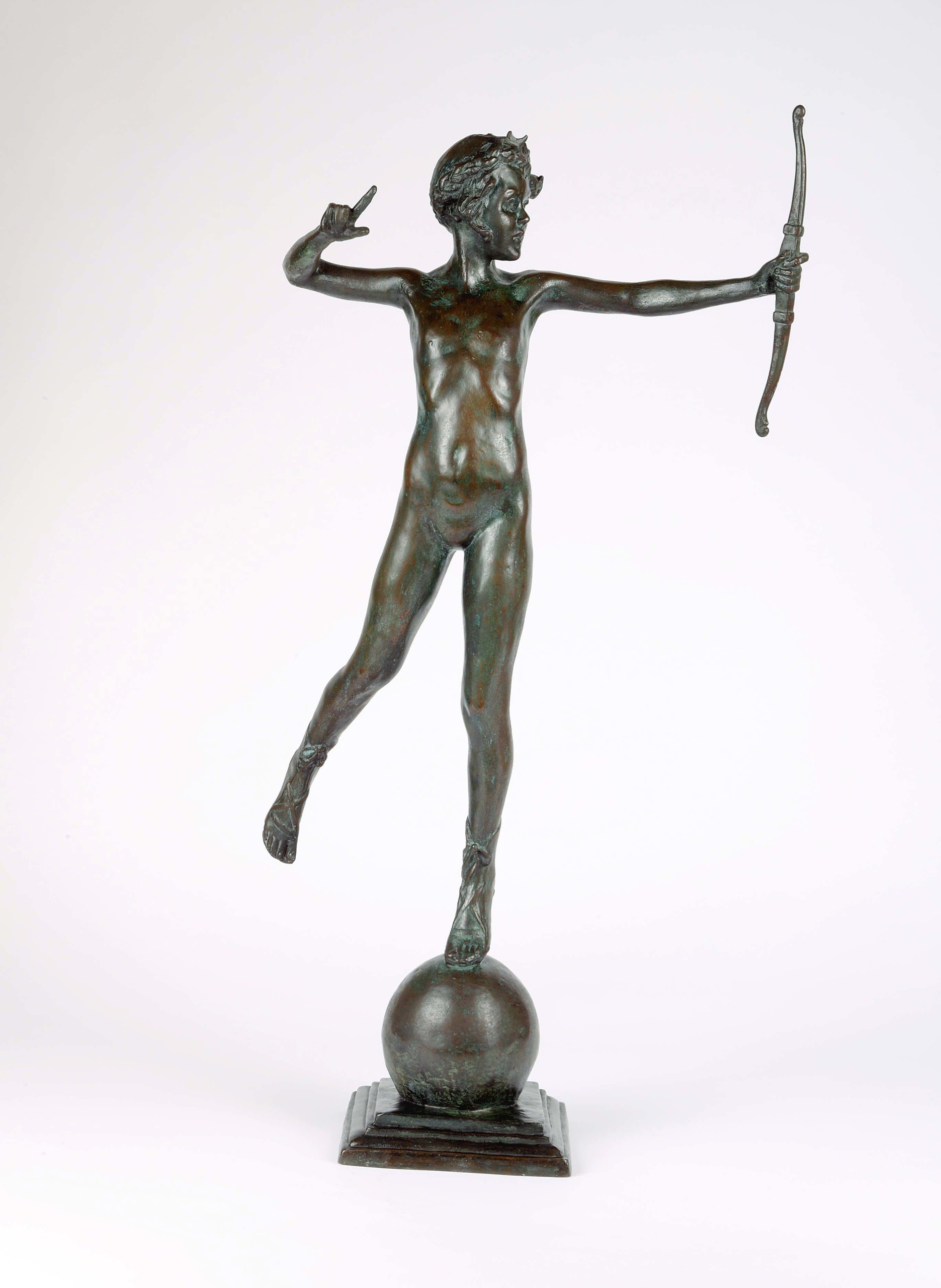
“Young Diana” by Janet Scudder, 1910, bronze with green and brown patina. Gift of Dr Michael L. Nieland.
What are we to make, exactly, of all these nude or nearly-nude bronze women, dancing and stretching and extending in seemingly limitless ways? Few of them have any kind of context; apart from Scudder’s “Young Diana,” they are not goddesses or fictional characters and they do not personify virtues or continents, as they might have for Augustus Saint-Gaudens or Daniel Chester French. Nuckles and Filippini-Fantoni agree that it seems significant that all three of the women sculptors represented here were not only involved in suffrage and women’s rights but also had same-sex romantic relationships. This is not to say that the nudes are overtly sexual or rendered as objects of desire, so to speak; it is more that there is a kind of guilelessness in their depiction. These nudes, some so light and dynamic that they seem to dance off their pedestals, do not bear the weight of the centuries that came before them. They are more free, less inhibited, than their predecessors.
Nuckles notes that Frishmuth often guided her models poses with scenarios for them to imagine. For “Play Days,” she says, the prompt for the model (dancer Madeleine Parker) was, “What would you do if you were dipping your toe in and there was a frog in the pond?” Parker’s off-balance attitude of surprise, recoiling but intrigued at the same time, captures a “level of intimacy in the detail and in the movement,” says Nuckles. “It’s so very, very subtle but so beautiful and celebratory.” Filippini-Fantoni adds that if, indeed, Hoffman, Frishmuth and Scudder were expressing their sexuality with works like these, “it was a safe space for them to do that, because the female form in sculpture was something that nobody was going to question…it wasn’t something that was going to expose them, but at the same time, it allowed them to express part of themselves.”
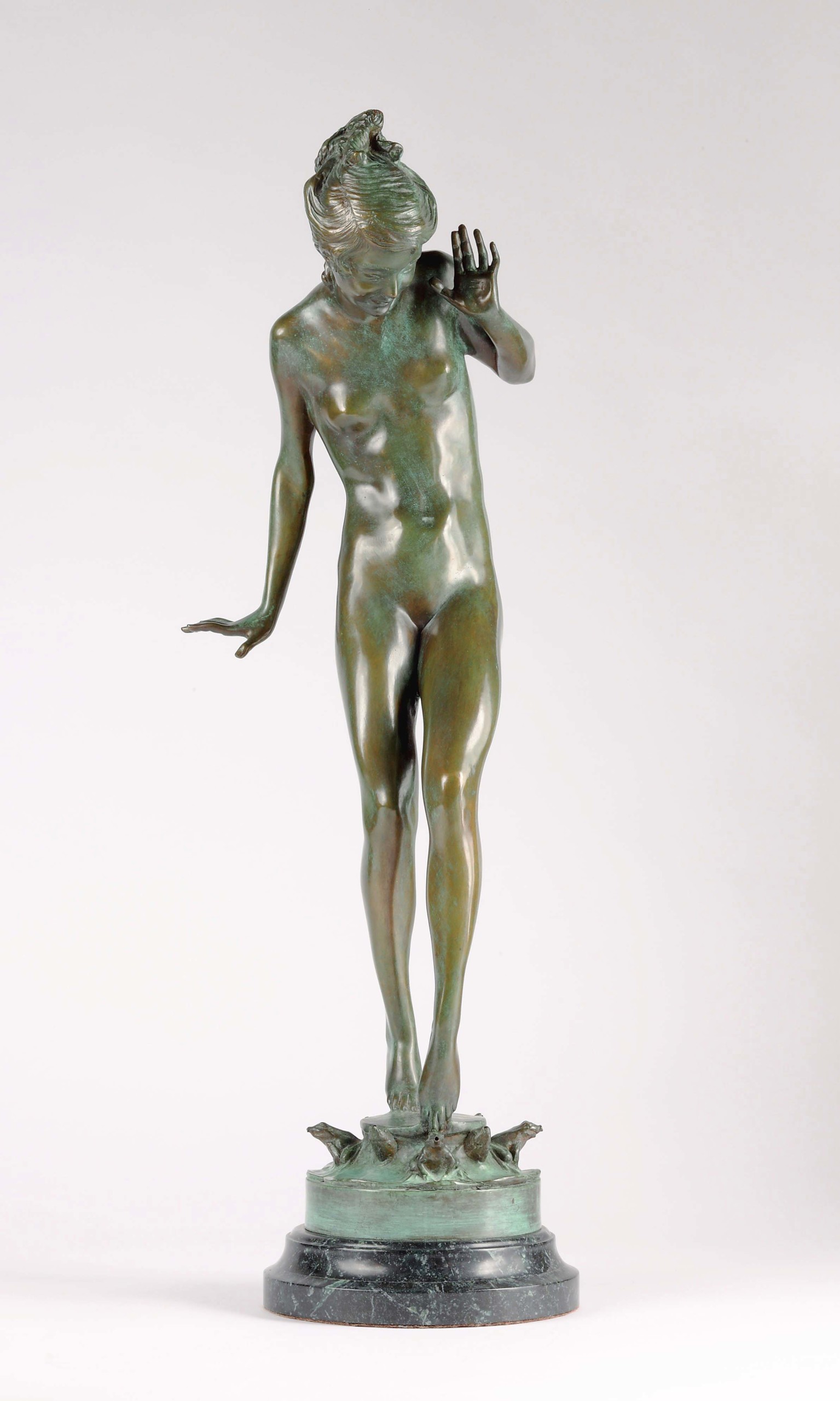
“Play Days” by Harriet Whitney Frishmuth, circa 1925, bronze with green and brown patina on green and gray marble base. Gift of Dr Michael L. Nieland.
It bears noting that these nudes are all still idealized, to a great extent: lithe, smooth-skinned, acrobatic. The pronounced youth of many of the figures also seems particularly noteworthy, though it is difficult to parse exactly how. Parker would have been no more than 14 when she posed for Frishmuth; does that make the frog story less charming? What does it mean that one of Hoffman’s most popular sculptures — here in both a small and a large version — was “La Frileuse (Shivering Girl),” a clearly prepubescent child, nude, hunched over in a self-protective gesture that nevertheless leaves her pubic area visible? Does it matter that the sculpture was made by a woman, who presumably once looked like that child, who may have felt the same vulnerability?
Scudder’s “Young Diana,” too, seems like a girl barely in her teens, but here she is an avatar of power and self-possession. The pose notably recalls Saint-Gauden’s more mature “Diana,” which at that time would have still been in place atop the tower at Madison Square Garden. Local historians in Indiana have claimed that Scudder was disappointed earlier in her career when she sought work in Saint-Gaudens’s studio, so it is tempting to see this as a kind of “last word” from Scudder, when she was at the height of her success and Saint-Gaudens had passed away. Apart from the youth of Scudder’s figure, the most significant difference between the two works is that Saint-Gauden’s “Diana” is still tracking her prey and poised ready to shoot, while Scudder’s has seemingly just released her arrow and, presumably having hit her mark, is mentally on to the next step. Young, yes. A girl, yes. But like her maker she knows exactly what she’s doing.
Scudder and her contemporaries were not the first American women to participate in the international sculpture scene. They stand on the shoulders of Harriet Hosmer, Edmonia Lewis, Emma Stebbins and others, who studied and worked in Rome. The work produced by that earlier generation, though, remained firmly within the established sculptural tradition — even if aspects of the lives the women led were anything but traditional. The innovation of the “Fountain of Forms” sculptors, by contrast, was to look forward, rather than back to the ancients; to embrace modernism in sculpture at its very cusp, using bronze as an expressive medium; and to consider anew, for a new century, the definitive subject of the female nude.
The Westmoreland Museum of American Art is at 221 North Main Street. For information, 724-837-1500 or www.thewestmoreland.org.

